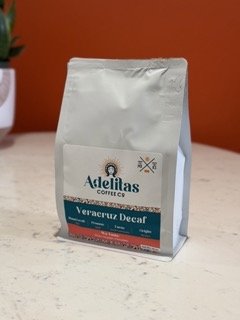Veracruz Decaf
mexico
veracruz
farm: smallholders throughout the region
process method: mountain water process
roast style: medium
roaster tasting notes: plum, orange, chocolate
This batch of Veracruz green coffee beans was obtained from smallholders throughout the region. It features a blend of Tipica, Bourbon, and Caturra varieties. Before the decaffeination process at the Descamex facility, the beans were washed and fully sundried. Veracruz, often referred to as the “capital of coffee,” ranks as the second-largest coffee-producing state in Mexico. Situated on the southeastern coast along the Gulf of Mexico, this city served as the entry point for coffee to spread across the country after the initial plants arrived from the Caribbean in the 18th century. With elevations ranging from 1,200 to 1,600 meters above sea level, Veracruz is ideally suited for Arabica coffee cultivation. The region enjoys a warm, semi-humid climate, receiving an average annual rainfall of 2,141 mm.
The Mountain Water Decaffeination Process. This widely favored natural approach employs pure water as an extraction solution, effectively separating caffeine compounds from unroasted green coffee. The Mountain Water decaf process ensures that green coffee remains free from chemicals. This decaffeination method eliminates approximately 99% of the coffee’s caffeine while maintaining the original flavor and sensory qualities of the coffee.
mexico
veracruz
farm: smallholders throughout the region
process method: mountain water process
roast style: medium
roaster tasting notes: plum, orange, chocolate
This batch of Veracruz green coffee beans was obtained from smallholders throughout the region. It features a blend of Tipica, Bourbon, and Caturra varieties. Before the decaffeination process at the Descamex facility, the beans were washed and fully sundried. Veracruz, often referred to as the “capital of coffee,” ranks as the second-largest coffee-producing state in Mexico. Situated on the southeastern coast along the Gulf of Mexico, this city served as the entry point for coffee to spread across the country after the initial plants arrived from the Caribbean in the 18th century. With elevations ranging from 1,200 to 1,600 meters above sea level, Veracruz is ideally suited for Arabica coffee cultivation. The region enjoys a warm, semi-humid climate, receiving an average annual rainfall of 2,141 mm.
The Mountain Water Decaffeination Process. This widely favored natural approach employs pure water as an extraction solution, effectively separating caffeine compounds from unroasted green coffee. The Mountain Water decaf process ensures that green coffee remains free from chemicals. This decaffeination method eliminates approximately 99% of the coffee’s caffeine while maintaining the original flavor and sensory qualities of the coffee.
mexico
veracruz
farm: smallholders throughout the region
process method: mountain water process
roast style: medium
roaster tasting notes: plum, orange, chocolate
This batch of Veracruz green coffee beans was obtained from smallholders throughout the region. It features a blend of Tipica, Bourbon, and Caturra varieties. Before the decaffeination process at the Descamex facility, the beans were washed and fully sundried. Veracruz, often referred to as the “capital of coffee,” ranks as the second-largest coffee-producing state in Mexico. Situated on the southeastern coast along the Gulf of Mexico, this city served as the entry point for coffee to spread across the country after the initial plants arrived from the Caribbean in the 18th century. With elevations ranging from 1,200 to 1,600 meters above sea level, Veracruz is ideally suited for Arabica coffee cultivation. The region enjoys a warm, semi-humid climate, receiving an average annual rainfall of 2,141 mm.
The Mountain Water Decaffeination Process. This widely favored natural approach employs pure water as an extraction solution, effectively separating caffeine compounds from unroasted green coffee. The Mountain Water decaf process ensures that green coffee remains free from chemicals. This decaffeination method eliminates approximately 99% of the coffee’s caffeine while maintaining the original flavor and sensory qualities of the coffee.


